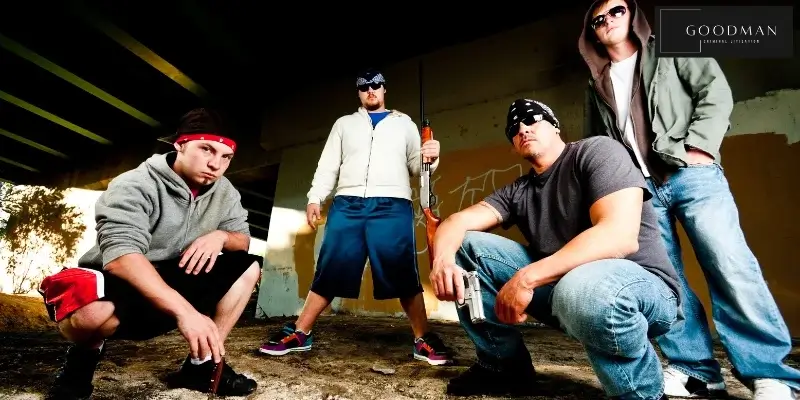UNDERSTANDING GANG CRIME IN SANTA ANA
Gang crimes are a serious problem in Santa Ana. Overall, the city ranks 14 out of 100 in national safety indexes. This means that it is safer than only 14% of US cities. While neighborhoods like Rocking Horse Ridge, Lemon Heights/North Tustin, and Park Santiago are among the safest in the city, the western parts of Santa Ana (including areas near Harbor Boulevard and Central City) often see high rates of gang-related activity and law enforcement presence.
The Santa Ana Police Department actively targets gang-related homicides and assaults, offering rewards for information leading to arrests. These efforts reflect an aggressive stance on gang crime, especially in areas where violence and drug trafficking overlap. On April 10, 2025, SAPD officers conducted a traffic stop at the West Coast Inn on North Harbor Boulevard. The stop led to significant quantities of narcotics and firearms, and the discovery of 127.8 grams of methamphetamine and multiple firearms.
WHY ARE GANG-RELATED CRIMES TREATED DIFFERENTLY?
In the eyes of law enforcement and prosecutors, gangs are more than a public nuisance. Organized crime can lead to neighborhood blight, loss of economic activity in areas with high gang activity, and elevated incidents of violence and crime. Law enforcement frequently sweeps through areas of town near West McFadden Avenue, South Bristol Street, and Jerome Park for signs of gang activity.
To combat gang activity in California, state leaders have passed additions to the penal code that address gang-related crimes. Under California law, prosecutors may pursue gang enhancements under Penal Code § 186.22, adding years to a sentence if they believe the offense was committed “for the benefit of a criminal street gang.”
These cases often involve special gang units and extended investigations, even when the original offense is minor. The presence of tattoos, field interview cards, or location alone can trigger enhancements, making it critical to fight these labels early in the process.




